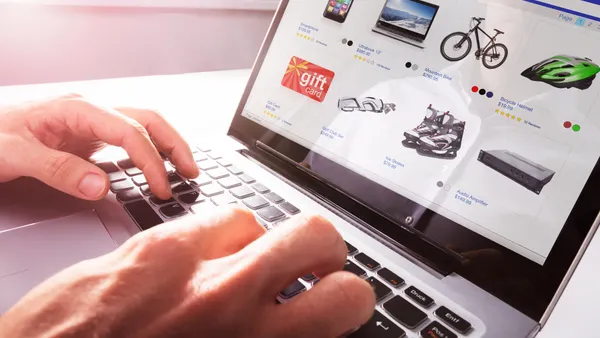Dive Brief:
- More than one third (37%) of U.S. consumers are willing to pay more for a product or service providing that they can get a superior shopping experience with mobile, according to a study by Worldpay. When millennials (defined in the study as those between the ages of 18 and 24, but generally defined as between 22 and 35) are broken out, the number rises to 44%, which is twice as high as consumers older than 65.
- Apps are the channel of choice for 68% of consumers, but competition for app space on individual mobile devices is fierce. U.S. consumers have downloaded an average of seven apps compared to a global average of 10.
- Security concerns are the top reason consumers abandon shopping carts while shopping on mobile. Additionally, 77% will only download apps from brands and retailers that they trust.
Dive Insight:
U.S. merchants are still in the early stages of realizing the full benefits of selling on mobile apps. The U.S. lags the rest of the world when it comes to paying with an app, as 32% of the 16,000 people surveyed by Worldpay preferred to use a mobile browser, according to the research.
What consumers are looking for is a better mobile shopping experience that an app might provide. "Online merchants that can deliver the right experience have much to gain, as shoppers are making bigger, more valuable purchases via their smartphones and are even happy to spend more with merchants that deliver a better experience," Shane Happach, executive vice president and head of Global Enterprise eCommerce, said in a press release.
It mostly comes down to space availability. In creating a five-star shopping experience, app developers need to translate the large computer screen designs in their minds to the much smaller mobile screen. Some may still think of this as optional, a matter of simply making the layout and function more mobile friendly. But customers who see the mobile as their primary device require more than that. They need to be able to see it all and do it all on their mobile screen.
Space is also an issue when it comes to the number of apps consumers will keep on their phones. Most have learned that the devices will function better if they have less content active. Their new phone may have more storage, but the gatekeeper to the phone is its user, who may have learned to conserve space, and merchants have to convince them that the app will be a worthwhile investment of digital real estate. One solution still emerging are progressive web apps that use newer web technologies to deliver app-like experiences to users, with the promise of better experiences than native apps or the mobile web browsers. Another fix for users are apps that help free up space.
Security issues are the top reason many consumers abandon shopping carts and don’t download unfamiliar apps. Media reports of bugs and breaches make this top-of-mind. "Merchants can help to mitigate shoppers' security fears by providing a mobile payment experience that's quick, seamless and familiar. This might mean implementing the latest in biometric technology, such as fingerprint scanning and facial recognition, as an extra layer of security, and prioritizing healthy user ratings on the app store," Happach said.













